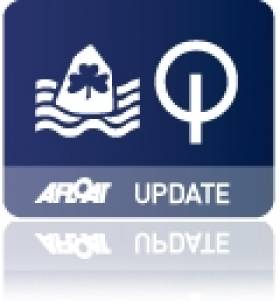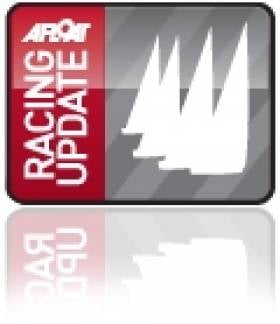Displaying items by tag: McCann
McCann Best of Irish at Optimist British Nationals
Peter McCann ended his assault of the British Optimist National Champion at Pwllheli Sailing Club in 13th place. Other Irish team results inlcuded a 23rd for Cliodhna ni Shuilleabhain and a 16tth for Sean Donnelly. Full results here.
The 50th Volvo Gill Optimist National and Open Championship came to a close on Friday after a week of fantastic sailing in a mixture of racing conditions. The week started light with no wind for the 450 sailors but increased as the week progressed. Racing finished with sunshine but challenging conditions and 30-40 degree shifts.
After 12 races and talented, consistent sailing New Zealand’s Leonard Takahashi-Fry (13, Murrays Bay SC) takes the Volvo Gill Optimist Open Champion title “It’s really exciting to be Volvo Gill Optimist Open Champion. Sailing today was ok and pretty shifty but the weeks been great and as it went on I got better at sailing in the shifts. It’s been a bit cold, back home it’s hotter but it’s been pretty nice weather. I’ve really enjoyed sailing here and the event’s been well organized” said Leonard.
Arran Holman (14, Hollowell SC) is crowned Volvo Gill Optimist British National Champion “It’s been a really good week, enjoyable and very exciting. Today was really shifty and challenging out there but it was good and great conditions. It’s great to be the 50th National Champion and I’ve had a fantastic time” said 2010 Volvo Optimist End of Season Champion, Arran.
The trophy for the top British girl was awarded to Royal Lymington’s Mimi El- Khazindar (14) and Gill Race Team member Milo Gill Taylor (11, Spinnaker Sailing Club) secured the Junior fleet title. Close behind Milo was local sailor Huw Edwards (12, Port Dinorwic).
“It’s absolutely amazing! I’m so excited. Today was nerve racking but I won my first race. It’s my favourite sailing venue and I won the Regatta fleet here in 2008 so it’s great to win again” said GBR World Squad member Milo.
After 13 races the winner of the Regatta Racing fleet was 10 year old Matilda Nicholls (Royal Bermuda YC) who showcased talented sailing all week, followed by Sally Lorimer (Warsach SC).
Newly appointed IOCA (UK) Chairman, Simon Rogers paid tribute to a wonderful week of fun yet competitive racing “It’s been an incredible week with some absolutely fantastic sailing here at the 50th anniversary of the National Championships. We are delighted with the racing we have had all week and the conditions have been perfect ”.
Racing Round up: Dun Laoghaire Regatta, ISAF Youths, Optimists, Paralympic, RORC, WIORA, Quarter Ton, Kiteboarding.
In offshore news, the Transatlantic Race 2011 Nears a Finish, and RORC yachts that headed West did best in the St Malo from Cowes race. Ireland's entry in the Tall Ships race, Celtic Mist, is safely in Scotland. WIORA starts this week in Clifden, thirty boats are expected.
Two top Cork performers are in Cowes for this week's Quarter Ton Cup.
In other boating news, rower Siobhan McCrohan won bronze at the World Rowing Champs in Lucerne, Kiteboarding debuted in Dun Laoghaire. There were Medals for Irish Kayakers at Athens Special Olympics.
And finally after a Elaine 'Shooter' Alexander is set for hero's welcome this week as she becomes the first woman from Northern Ireland to circumnavigate the island of Ireland.
All on our home page this morning, thanks for your interest in Irish Sailing and Boating.

























































